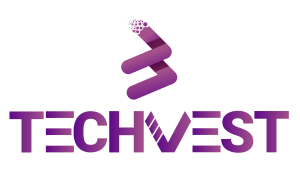Introduction
In today’s highly competitive business landscape, customer relationship management (CRM) has become an essential tool for organizations seeking sustainable growth. Itinvolves systematically collecting, organizing, and analyzing customer data, with the ultimate goal of improving customer satisfaction, loyalty, and profitability.Using CRM technologies and strategies, businesses can gain valuable insights into their customers’ behaviors, preferences, and needs, allowing them to deliver personalized experiences. CRM allows businesses to better understand their customers, anticipate their needs, and deliver personalized experiences. CRM helps organizations streamline their sales and marketing processes, enabling more efficient lead generation, assessment, and management.
Enhancing Customer Relationship Management
By focusing on collecting and organizing customer data, analyzingbehaviors and patterns, personalizing interactions, and building loyalty and retention, companies can foster relationships. This article explores these key aspects of CRM and provides insights into how businesses can leverage them effectively.By implementing advanced data collection techniques and using customer relationship management software, organizations can collect valuable information such as demographics, purchase history, preferences, and communication preferences. businesses can leverage CRM tools to segment customer data and create targeted campaigns based on demographics, interests, previous purchases, and browsing behavior. In 2023, businesses will also be able to leverage AI-powered chatbots and self-service tools to provide instant, personalized support to customers. A CRM system allows businesses to track customer interactions, preferences, and purchase history, allowing them to deliver a personalized experience at every touchpoint. By leveraging this data, organizations can nurture relationships with customers, demonstrate value and exceed expectations, and drive loyalty and retention. By 2023, businesses can leverage CRM tools to implement proactive customer support strategies.
Streamlining Sales and Marketing Processes
In today’s competitive business landscape, organizations strive to streamline their sales and marketing processes to maximize efficiency, increase revenue, and drive business growth. Optimize marketing campaigns to improve performance and return on investment.
- Lead Generation and Management
Capturing and Evaluating Leads: Implementing effective lead generation strategies helps businesses attract leads. By using a variety of channels such as websites, social media, and events, organizations can capture leads and gather valuable insights.
Tracking and Monitoring Lead Progress:Using a powerful CRM system allows businesses to track and monitor a lead’s progress through the customer journey. By accurately recording lead interactions, touchpoints, and activities, organizations gain visibility into the status of each lead, allowing them to nurture and convert customer leads into paying customers effectively.
- Sales Pipeline Management
Identifying Opportunities and Managing Deals:Managing the sales process involves identifying opportunities and effectively managing deals at different stages. Using CRM tools and techniques, organizations can track potential deals, assign tasks to sales teams, and track progress. This ensures that opportunities are not missed anddeals are efficiently managed throughout the sales process.
Forecasting Sales and Revenue:Accurate sales forecasting is essential for effective planning and resource allocation. By mining historical data, analyzing trends, and using CRM analytics, organizations can make informed predictions about future sales and revenue. This allows them to properly allocate resources, set realistic goals, and make strategic business decisions.
- Marketing Campaign Automation
Automating Email Marketing and Campaigns:Automation plays a vital role in the execution of successful marketing campaigns. Using marketing automation platforms and CRM integrations, businesses can automate email marketing campaigns, delivering personalized and timely messages to segmented groups of customers. This automation streamlinescampaign execution, providing consistency and increased communication with customers.
Tracking Campaign Performance and ROI: Measuring the performance and return on investment (ROI) of marketing campaigns is crucial for optimizing marketing strategies. Using CRM analytics and tracking tools, businesses can track key metrics like click-through rates, conversion rates, and revenue generated from each campaign. This data-driven approach enables organizations to identify successful campaigns, allocate resources efficiently, and continuously improve their marketing efforts.
Internal Collaboration and Communication
Improved collaboration and internal communication are critical for organizations to effectively achieve their goals and foster a cohesive work environment. Facilitating communication between teams is essential to align sales, marketing, and customer service efforts, allowing them to work together toward common goals. By coordinating these efforts, organizations can deliver a consistent customer experience and maximize customer satisfaction.Additionally, aligning goals and strategies across departments ensures everyone is working towards the same vision, improving collaboration and synergy. Ultimately, improved productivity and efficiency are achieved by automating common tasks and processes, reducing manual errors, and streamlining workflow. By prioritizing collaboration and internal communications, organizations can optimize processes, improve productivity, and drive success.
Leveraging Data Analytics and Insights
- By analyzing customer behavior and preferences, identifying market trends and opportunities, making data-driven business decisions, and measuring key performance indicators (KPIs), organizations can can harness the power of data to drive growth and success.
- Optimizing Marketing Strategies and Campaigns: Data-driven marketing strategies drive higher ROI.
- By analyzing customer data, organizations can identify the most effective marketing channels, target the right audience segments, and personalize marketing messages.
- Data analytics also allows businesses to measure campaign performance, track key metrics, and optimize marketing initiatives in real time.
- By analyzing sales data, conversion rates, and revenue metrics, businesses can gauge the effectiveness of their sales strategy, identify areas for improvement, and set realistic sales goals.
- This information enables organizations to optimize sales processes, allocate resources efficiently, and drive revenue growth.
Enhancing Customer Service and Support
By providing personalized and timely support, effectively resolving customer issues, increasing customer retention and satisfaction, implementing self-service options, providing proactive support and advice, collecting customer feedback and ratings, and leveraging the feedback for continuous improvement, This article examines these key aspects of improving customer service and support and highlights the importance of personalized experiences, proactive actions, and feedback-based improvements. Customer relationship management (CRM) systems allow businesses to track and maintain detailed records of interactions and customer history.This allows support agents to quickly access relevant information, understand customer needs, and provide personalized support. By implementing streamlined processes, effective communication channels, and well-trained support teams, companies can resolve customer issues quickly and efficiently. Proactively responding to feedback demonstrates a commitment to customer satisfaction and drives continuous improvement efforts.
